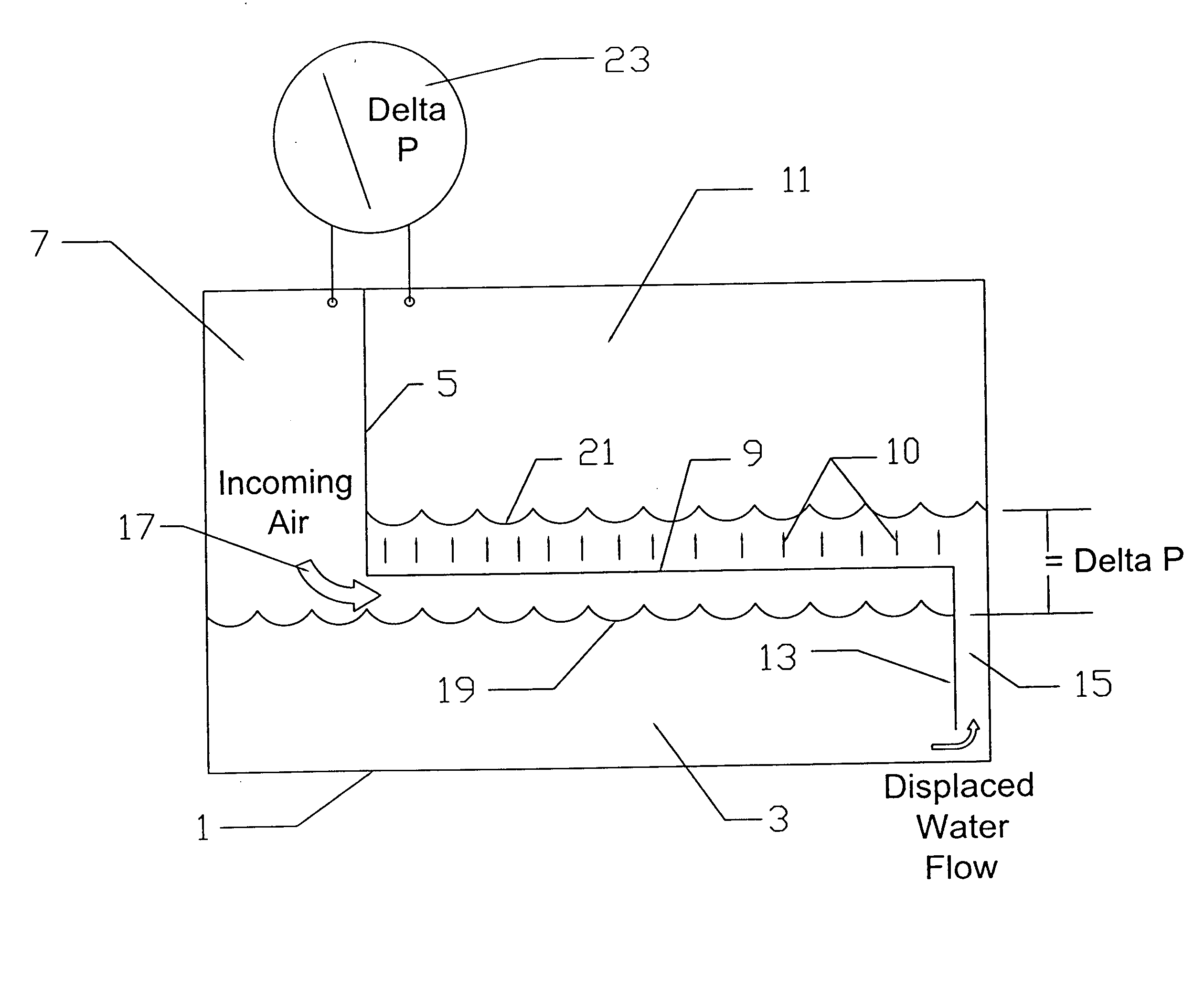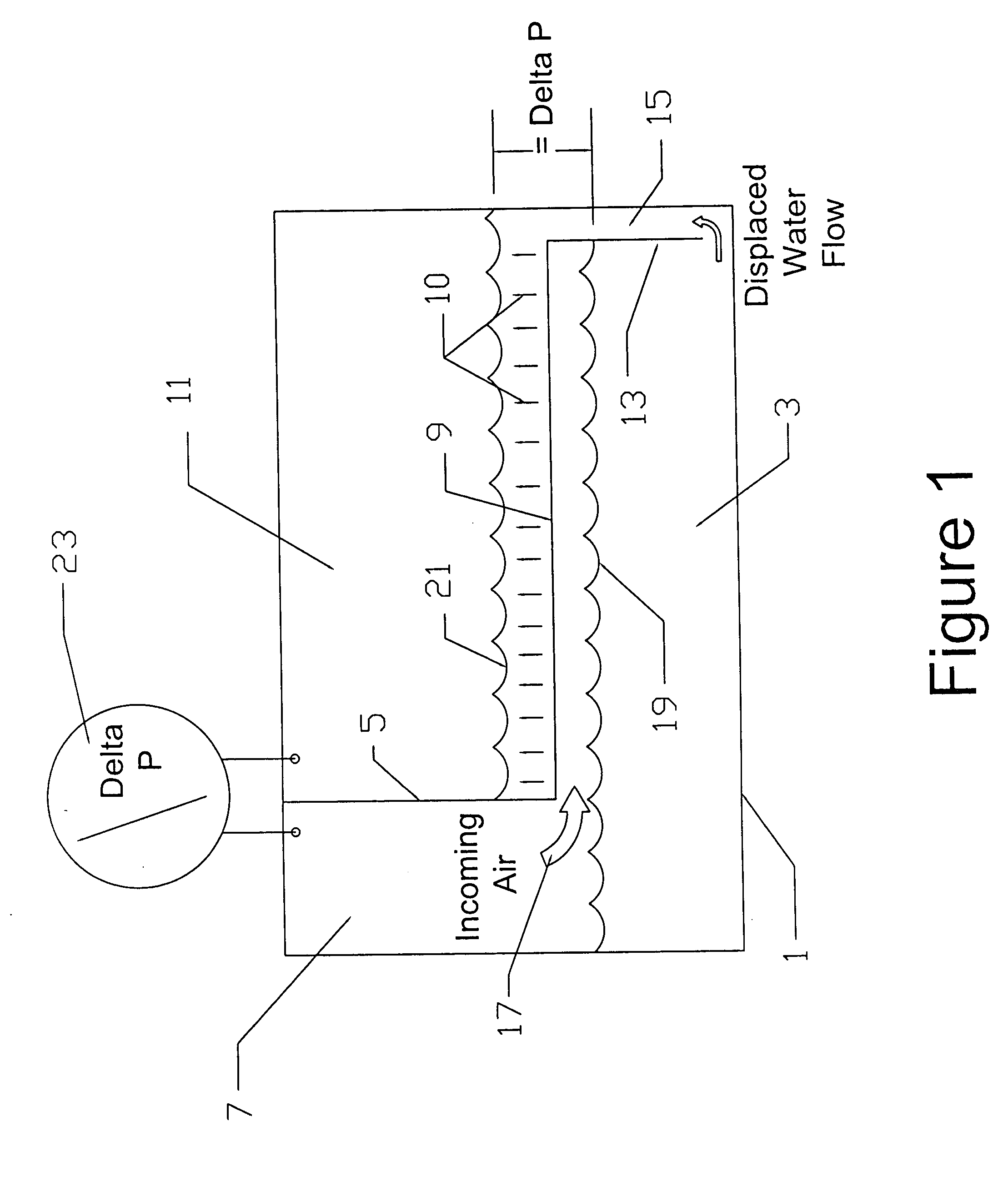Apparatus for removing particulates from a gas stream
a technology of particulates and apparatus, applied in the field of environmental control, to achieve the effect of reducing nois
- Summary
- Abstract
- Description
- Claims
- Application Information
AI Technical Summary
Benefits of technology
Problems solved by technology
Method used
Image
Examples
Embodiment Construction
[0031] The schematic diagrams of FIGS. 1 and 2 show the present invention in its simplest form. A container or vessel 1 defines a sump or reservoir which holds liquid 3, which is normally water. A perforated sheet 9 lies above the reservoir. The short vertical lines 10 symbolize the air jets and bubbles, as they pass through the perforations. A baffle 5 separates inlet channel 7 from outlet area 11 above the perforated sheet. A baffle 13 defines liquid transfer channel 15. The baffle 13 does not extend to the bottom of the reservoir, thereby providing fluid communication between the reservoir and the liquid transfer channel.
[0032] As shown in the figure, the liquid transfer channel is narrow relative to the width of the reservoir. The width of the reservoir is, in general, many times the width of the liquid transfer channel.
[0033] The liquid transfer channel may take other forms. Instead of having a channel of the type shown in the drawings, one could instead use a slot, a tube, o...
PUM
| Property | Measurement | Unit |
|---|---|---|
| Pressure | aaaaa | aaaaa |
| Pressure drop | aaaaa | aaaaa |
| Area | aaaaa | aaaaa |
Abstract
Description
Claims
Application Information
 Login to View More
Login to View More - R&D
- Intellectual Property
- Life Sciences
- Materials
- Tech Scout
- Unparalleled Data Quality
- Higher Quality Content
- 60% Fewer Hallucinations
Browse by: Latest US Patents, China's latest patents, Technical Efficacy Thesaurus, Application Domain, Technology Topic, Popular Technical Reports.
© 2025 PatSnap. All rights reserved.Legal|Privacy policy|Modern Slavery Act Transparency Statement|Sitemap|About US| Contact US: help@patsnap.com



